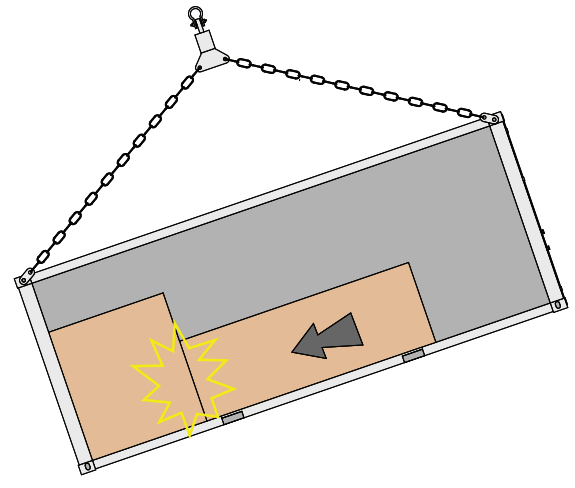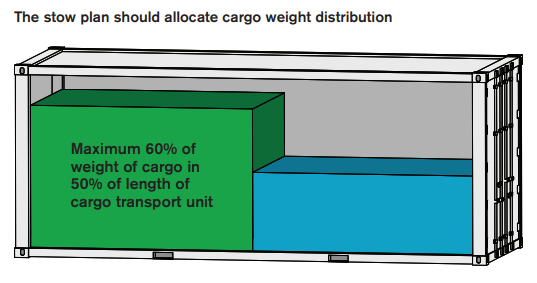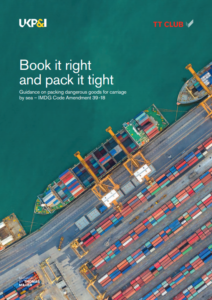In the beginning of the year, 1 January 2020, the latest version of the IMDG Code, Amendment 39-18, came into force. Following, UK P&I Club along with TT Club collaborated, launching guidelines and providing an insight for all actors in the freight supply chain, who are responsible for preparing unitized consignments for carriage at sea.
Specifically, both Clubs published the amended ‘Book it right and pack it tight’ publication, to support shippers, forwarders, shipping line booking personnel and those who pack dangerous goods into cargo transport units to gasp the technical aspects of the IMDG Code.
This guide follows the challenging issue, which is often seen nowadays, of container ship fires, with IUMI strengthening its position on this alarming issue, highlighting that it is time to take action, as fire on cargoes need a quick response and a know-how perspective.
Stuart Edmonston is UK P&I’’s Loss Prevention Director noted that
UK P&I continues to participate in initiatives which focus on the capability to detect, suppress and extinguish fires at sea. However we share our sister organisation’s desire to tackle the causes of such fires at source.
In addition, the amended guide is divided in two parts;
Part A: Covers operational processes and documentation involved in preparing and presenting the consignment of dangerous goods for shipment.
Part B: There is a reference section that explains the basic principles of the UN Classification system, the technical terms used in the IMDG Code, and provides useful background information on common IMDG issues such as Limited Quantities Procedures.
The report highlights that it is crucial that the personnel which will package dangerous goods is trained and informed of the IMDG Code.
Also, the report highlights that the staff should understand:
- The legal responsibility to identify dangerous goods accurately;
- Where to locate required information in the IMDG Code;
- How to identify different classes of dangerous goods;
- How dangerous goods data is presented on a transport document and what it means;
- How packages should be marked and labelled;
- How to make up, mark and label dangerous goods in palletized units;
- The segregation rules in the IMDG Code concerning the separate packing of different types of dangerous cargoes;
- How to stow and secure packages of different types and sizes in cargo transport units so the packages will not slide, roll or collapse under the weight of over-stowed cargo when at sea;
- The rules of placarding and labelling shipping containers;
- The legal responsibility accepted by the packer by signing a packing certificate.
Eight steps:
In the Part A of the guide, it is stated that all parties involved in the transmit of dangerous goods should be equally informed of the products, and all dangerous goods should be classified by analysis into one of nine hazard classes.
The second step is the packing of dangerous goods, followed by marking and labelling (third step). Then, the fourth step is the transport document for booking with the shipping line, which the shipper is required to present when booking a dangerous goods consignment with a shipping line.
Moreover, the fifth step is IMDG segregation. The sixth step concerns the packing; The packer is responsible for ensuring that the dangerous goods are safely packed, checking in advance for potential problems and add to the safety of consignment and assist cargo handlers who will physically loft and stow the cargo.
After the packing of the dangerous goods, the seventh step is about the packing certificate which must by signed by the packer and will ensure that the goods have been properly marked and labelled, segregated, secured, no leaking packages are packed, and the container has been correctly placarded and that the packages and the cargo unit comply with every requirement of the IMDG code.
Concluding, the eight and final step is about safely loading containers to the ship.
Warning:
- Ship planners depend entirely on the accuracy of information supplied by the shipper and container packer;
- If you do not report every UN number, the proper ship segregation and stowage checks cannot be conducted;
- Missing or inaccurate dangerous goods information will result in unsafe stowage;
- If you fail to declare, you place the ship in danger and are in breach of state legislation;
- In the event that mis-declaration leads to an accident, you render yourself liable for civil court action for damage recovery and injury compensation.
Concluding, Peregrine Storrs-Fox, TT Club’s Risk Management Director noted that
As so often the case, fires and explosions are merely the ‘tip of the iceberg’ of problems, which are inherent throughout the supply chain … There are far too many errors in classification and declaration of commodities to be transported.
To learn more on “Book it right and pack it tight” publication, you may click herebelow




































































